Nickels to Dollars Calculator [ Nickels To Dollars Converter 2025 ]
To convert nickels to dollars, multiply the number of nickels by 0.05, as each nickel is worth 5 cents.
To convert nickels to dollars, multiply the number of nickels by 0.05, as each nickel is worth 5 cents.
The Nickels to Dollars Calculator simplifies the conversion of nickels into dollar amounts. This tool is useful for counting coins and promptly finding their value in dollars, ideal for budgeting or tallying collections. Since each nickel represents 0.05 dollars, this calculator aids the users to accurately calculate dollar totals based on the number of nickels.
| Variable | Description |
|---|---|
| Total amount in dollars | |
| Number of nickels | |
| 0.05 | Value of one nickel in dollars |
Example 1
| Step | Calculation |
|---|---|
| Given nickels | 100 nickels |
| Convert to $ | 100∗0.05=5.00 |
| Answer: 100 nickels equal $5.00. |
Example 2
| Step | Calculation |
|---|---|
| Given nickels | 200 nickels |
| Convert to $ | 200∗0.05=10.00 |
| Answer: 200 nickels equal $10.00. |
The Nickels to Dollars Calculator is a relatively convenient tool for converting nickels into their dollar equivalent. Given the fact, each nickel is worth 5 cents, this calculator assists swiftly to calculate how much a specific number of nickels amounts to in dollars.
For example, if you have 20 nickels, which is equivalent to $1, this tool provides an instant answer without needing manual calculations.
To calculate it, simply enter the number of nickels into the calculator. For instance, 4000 nickels equal $200, and 1000 nickels convert to $50.
Plus, this tool can also help answer common questions like “how much is 100 nickels in dollars?” or “how many nickels make 2 dollars?” by providing the exact dollar conversion. It’s a useful tool for tasks like coin-counting, budgeting, and financial planning.
This concludes, the Nickels to Dollars Calculator simplifies the conversion of nickels to dollars, providing quick answers for various coin-counting needs.
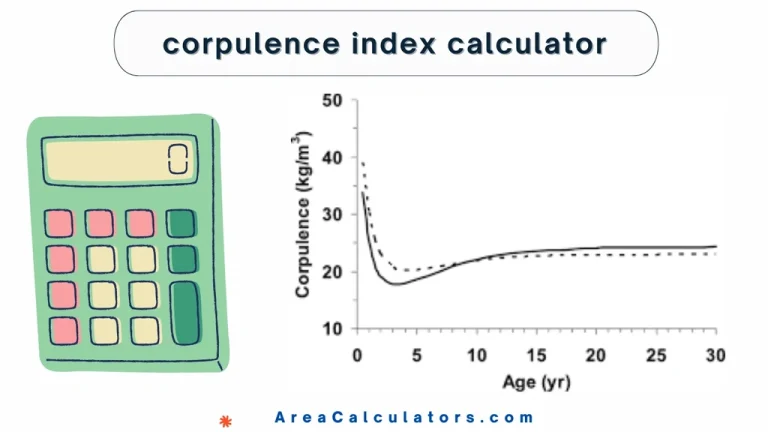
To calculate the Corpulence Index (CI), divide your weight by the square of your height and multiply by 703. This formula helps assess body fatness based on height and weight. The Corpulence Index Calculator works by measuring body corpulence, or fatness, in relation to height and weight. Similar to the Body Mass Index (BMI), it’s…
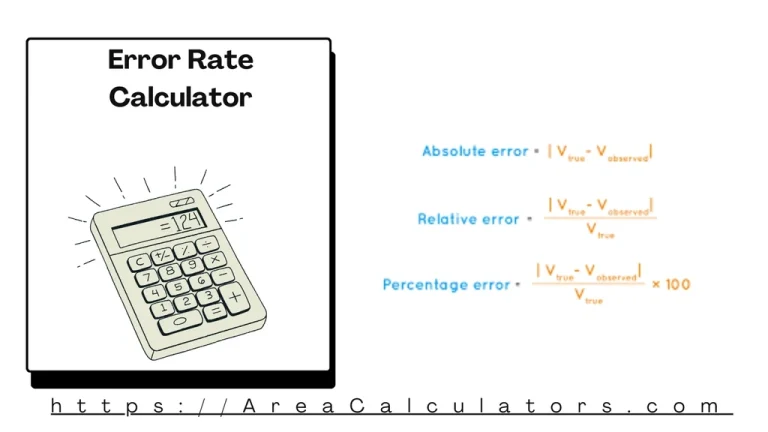
To determine the error rate, divide the total number of wrong attempts by the total number of attempts and express the result as a fraction or percentage. The Error Rate Calculator is an essential tool for evaluating accuracy in processes ranging from machine learning models to typing tests. It helps identify the proportion of errors…
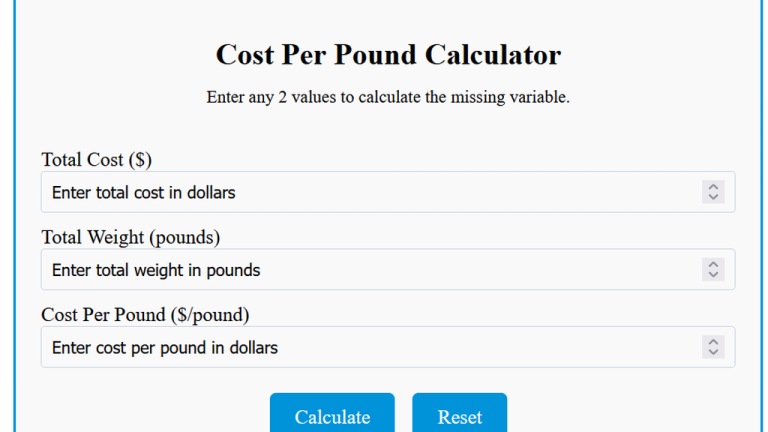
To calculate cost per pound, divide the total cost by the total weight in pounds. The Cost Per Pound Calculator is a practical tool for calculating the price per pound of any product or material. It is particularly useful for managing budgets, comparing prices, or evaluating shipping costs. From groceries to metals like steel or…
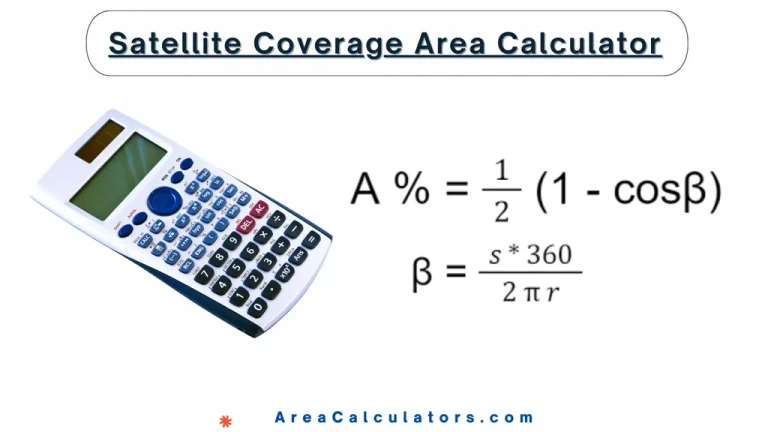
To calculate the satellite coverage area, multiply the satellite power (P) by 50, then divide by 1 plus the ratio of the satellite’s orbital radius (R) to the distance from the Earth’s surface (d). This will give you the coverage area in square kilometers. The Satellite Coverage Area Calculator is a useful tool in satellite…
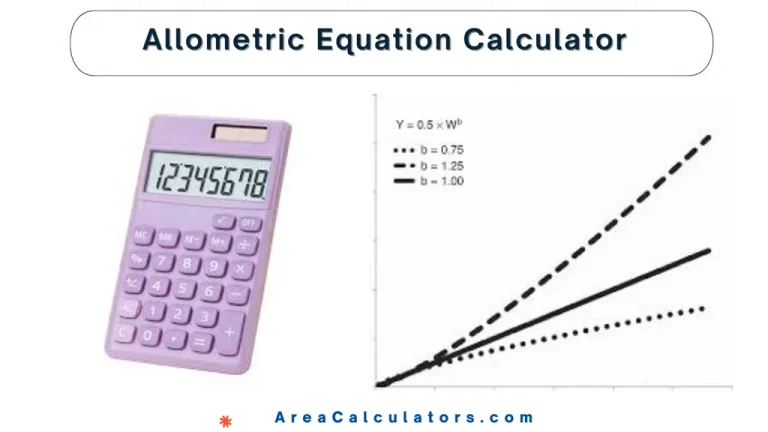
To calculate Y using the allometric equation, raise X to the power of b, then multiply the result by a. This gives you the predicted value of Y based on the independent variable X. Welcome to the Allometric Equation Calculator! Have you ever wondered how scientists determine the relationship between different biological variables? Allometric equations…
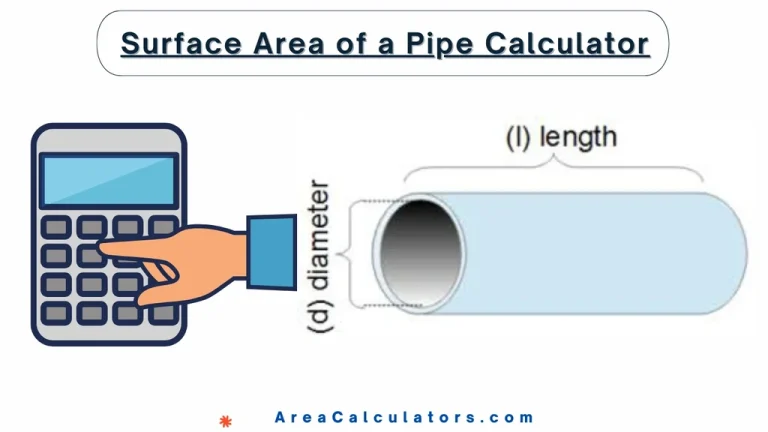
To calculate the total surface area of a pipe, multiply the inner diameter (ID) by the length of the pipe (L) and Pi (π), then add the result of multiplying the outer diameter (OD) by the length (L) and Pi (π). The Pipe Surface Area Calculator is a tool used to find the total surface…